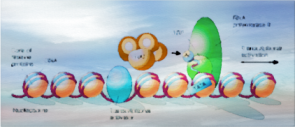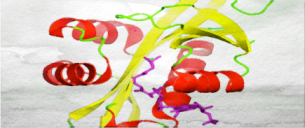Acetyltransferase


“Acetyltransferase (or transacetylase) is a type of transferase enzyme that transfers an acetyl group.
Histone acetyltransferases (HATs) are enzymes that acetylate conserved lysine amino acids on histone proteins by transferring an acetyl group from acetyl CoA to form ε-N-acetyllysine. DNA is wrapped around histones, and, by transferring an acetyl group to the histones, genes can be turned on and off. In general, histone acetylation increases gene expression.
In general, histone acetylation is linked to transcriptional activation and associated with euchromatin. When it was first discovered, it was thought that acetylation of lysine neutralizes the positive charge normally present, thus reducing affinity between histone and (negatively charged) DNA, which renders DNA more accessible to transcription factors. Research has emerged, since, to show that lysine acetylation and other posttranslational modifications of histones generate binding sites for specific protein–protein interaction domains, such as the acetyllysine-binding bromodomain.[citation needed] Histone acetyltransferases can also acetylate non-histone proteins, such as nuclear receptors and other transcription factors to facilitate gene expression.”
References:
- Roth, S.Y., et al., Annu. Rev. Biochem. 2001; 70: 81-120.
- Dokmanovic, M. et al., Mol. Cancer Res. 2007; 5: 981-989.
- http://en.wikipedia.org/wiki/Histone_acetyltransferase